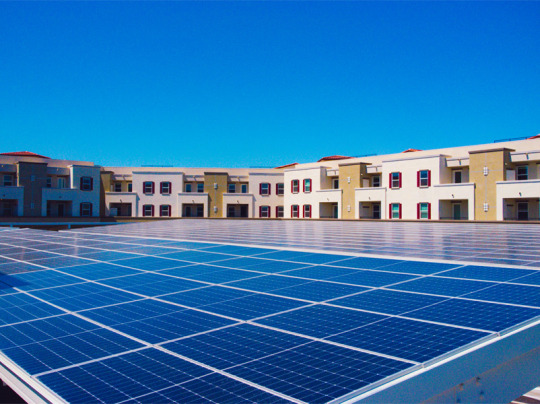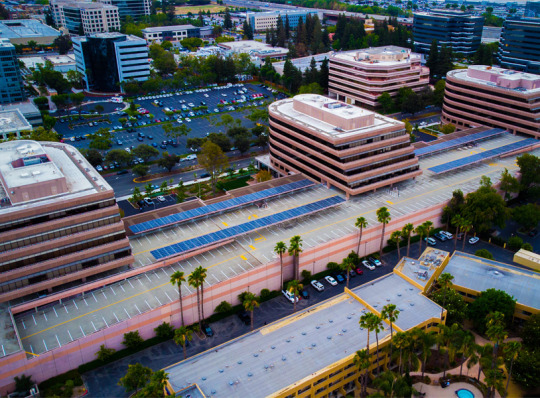Don't wanna be here? Send us removal request.
Text
How is California Multifamily Solar Energy Becoming More Popular?
The majority of California multifamily housing is owned and operated by non-profit corporations, and the majority of these are for-profit entities. California multifamily solar and energy efficiency programs are essentially funded by the California Energy Commission (CEC). The CEC is a government agency that administers the state to protect and promote the public interest in the relevant field of energy and environmental conservation. The CEC is responsible for the reliability of the state's energy supply, the conservation of energy, and the protection of the environment. The CEC also received over $1 billion in funding from the state's general fund in the fiscal year ending June 30, 2017. The CEC has a broad mandate to promote energy efficiency, renewable energy, and energy conservation in California.

The CEC has been carrying out a multifamily energy efficiency program since 1999. The CEC's multifamily energy efficiency program is funded by the state and the CEC has a right to approve the use of funds. The CEC requires that the programs be carried out by non-profit organizations that are registered with the CEC. Solar panels are installed on multifamily housing that is used for the production of energy and/or for the production of hot water. The CEC requires that the energy efficiency program be carried out by a non-profit organization that is registered with the CEC.
Solar panels can help you save money on your energy bills, reduce emissions of greenhouse gasses, and reduce your carbon footprint. The CEC's multifamily energy efficiency program is funded by the state and the CEC has a right to approve the use of funds. California has a Renewable Portfolio Standard (RPS) that requires the state to produce a certain percentage of its energy from renewable sources by 2025. California multifamily solar energy programs are required to meet the state's RPS. Regulators require that the programs be carried out by non-profit organizations.
There are several ways to generate energy on your multifamily property, including using solar panels and installing a solar hot water system. California’s multifamily energy efficiency programs are required to meet the state’s RPS. Regulators require that the programs be carried out by non-profit organizations.
In California, multifamily buildings are required to have a qualified renewable energy system under the California RPS. California multifamily solar contractors must be licensed to provide such installations, and the number of solar contractors has been on the rise as the programs become more popular.

The CEC has been carrying out a multifamily energy efficiency program since 1999. The CEC’s multifamily energy efficiency program is funded by the state and the CEC has a right to approve the use of funds. California has a Renewable Portfolio Standard (RPS) that requires the state to produce a certain percentage of its energy from renewable sources by 2025. California multifamily solar energy programs are required to meet the state’s RPS.
The future of California multifamily solar follows a path similar to that taken by commercial and industrial customers. It typically starts with an RFP, followed by the solicitation of quotes, tenders, and award, and ends with a signed contract. This five-step process is the same regardless of whether the electricity is being scaled up on-site or off-site. The final step in each process is for the contractor to meet the program goals, or in other words, to perform as expected.
The California RPS mandates that 20% of California’s energy come from renewable sources by 2025. The CEC\’s multifamily solar contractor program is required to meet the state\’s RPS.
Many California multifamily solar projects have been installed, particularly in the Bay Area, where there were more than 1,700 multifamily buildings with solar capacity as of July 2019.
#California Multifamily Solar#Renewable Energy Companies in California#Solar Hot Water System in California#Solar Energy Contractors in California#New Construction Solar in California#New Commercial Construction Solar in California#New Construction Solar Design in California
0 notes
Text
The Advantages of California Multifamily Solar
Solar power is one of the most abundant and sustainable sources of energy available. It emits no harmful pollutants or greenhouse gasses, and it is capable of powering entire communities with clean, renewable energy.
In recent years, California has taken great strides in adopting solar power on a large scale. Multifamily solar is one of the most exciting and effective applications of solar power in the state, and it is helping to power some of California’s most populous cities.
In this blog post, we will explore the benefits of California multifamily solar, and how this renewable energy source is helping to shape the future of the state.
As the cost of solar panels continues to fall, more and more multifamily property owners are installing solar arrays to reduce their energy costs. In California, the leading state for solar installations, there are a number of financial incentives and programs available to help multifamily property owners go solar.
Solar panels can save multifamily property owners money on their energy bills, and they can also help to reduce the state’s carbon emissions. If you’re a multifamily property owner in California, solar is definitely worth considering.
California has long been a leader in solar energy, and the state’s multifamily dwellings are no exception. Solar panels are becoming increasingly common on multifamily dwellings such as apartment buildings and townhomes, as residents and property owners alike recognize the benefits of solar energy.
Solar panels have a number of advantages for multifamily dwellings. They can help reduce energy costs, increase property values, and create a more sustainable and environmentally-friendly community. Additionally, solar panels can provide an aesthetically pleasing look for a multifamily dwelling.
If you’re considering solar panels for your multifamily dwelling, there are a few things to keep in mind. First, you’ll need to determine if your property is suitable for solar panels. Secondly, you’ll need to decide if you want to purchase or lease the solar panels.
The use of solar energy is on the rise, and this is especially true in the state of California. Multifamily solar projects are becoming more and more common, as they offer a way for property owners to save money on their energy bills and do their part to help the environment.
If you're considering installing solar panels on your multifamily property, there are a few things you need to know. In this article, we'll give you an overview of the benefits of multifamily solar and some things to keep in mind as you plan your project.
The use of solar energy is on the rise, and this is especially true in the state of California Multifamily solar projects are becoming more and more common, as they offer a way for property owners to save money on their energy bills and do their part to help the environment.
If you're considering installing solar panels on your multifamily property, there are a few things you need to know. In this article, we'll give you an overview of the benefits of multifamily solar and some things to keep in mind as you plan your project.
California is a state known for its natural beauty and its rich history. It is home to many of the world's most important libraries and museums. It is also home to the world famous celebrity town of Malibu. So, California multifamily solar makes a lot of sense. Multifamily solar is a great way to save money on your energy bills and do your part to help the environment. If you’re considering installations of solar panels on your multifamily property then it is a good idea to check out our solar panel installation guide. You can also check out our solar panel cost calculator to estimate the cost of your solar project.
#California Multifamily Solar#Solar Panels For Multifamily in California#New Construction Solar in California#New Commercial Construction Solar in California#New Construction Solar Design in California
1 note
·
View note